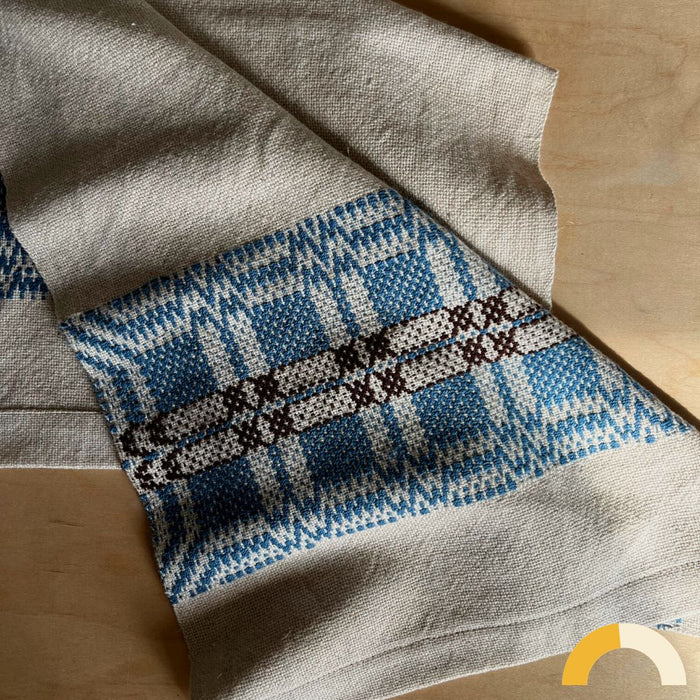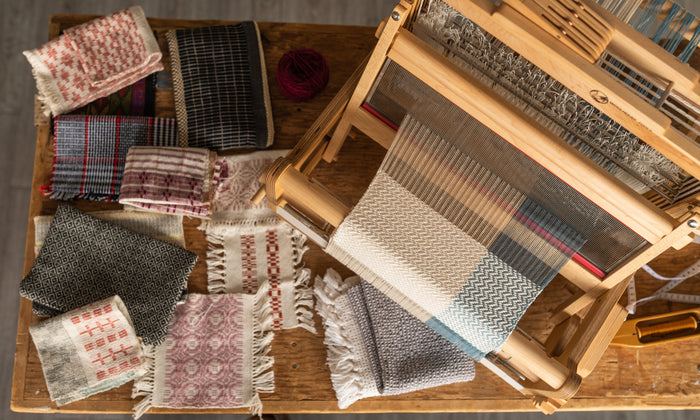A sett chart is a starting point to help you save time determining the ideal sett for your project.
Determining the ideal sett often requires some trial and error. Ruler wrapping, and sampling are truly the best way to determine sett, but this chart is a great place to start!
Learn more about how to determine the right sett HERE.
Extensive sett chart from Handwoven Magazine
|
Material |
Yards/Pound |
Sett |
Project Specific Recommendations |
|
16/2 Cotton |
6,720 |
20-30 |
20 epi plain weave: open gauze 24 epi plain weave: drapes well 28 epi plain weave: firm 30 epi twill: drapes well |
|
8/2 Cotton |
3,360 |
16-20 |
18 epi plain weave: perfect tea towels 20 epi twill: perfect tea towels Combine with boucle cotton weft at 16 epi in twill for a fuzzy and super absorbent towel |
|
Boucle Cotton |
2,300 |
12 |
12 epi plain weave |
|
8/4 Cotton |
1,680 |
10-16 |
10 epi plain weave: excellent drape 12 epi twill: excellent drape 16 epi twill: firm, lies flat Combine with boucle in twill at 12 epi for heavy duty towels Combine with 8/8 cotton in twill at 12 epi for chunky table runners or placemats |
|
2/8 Cottolin |
3,360 |
16-20 |
See notes for 8/2 cotton |
|
Bamboo |
3,360 |
18-24 |
18 epi plain weave: excellent drape 24 epi twill: excellent drape |
|
Seine Twine (#6, #9, #12) |
#6: 840 #9: 670 #12: 1,260 |
4-10 |
#6: 4-6 epi #9: 6-8 epi #12: 8-10 epi Sett should be determined to cover the warp entirely for a weft facing project with a seine twine warp. |
|
Alpaca 3/10 |
1,730 |
10-16 |
10 epi plain weave: drapey scarf 12 epi plain weave: more substantial scarf/blanket 16 epi twill: warm blanket or scarf with beautiful drape |
|
Briggs and Little Heritage Wool |
860 |
6-8 |
6 epi: plain weave 8 epi: twill blanket Pair with a seine twine warp at 4-6 epi for a sturdy rug |
|
Normandy Linen |
16/6, 800 16/4, 1200 16/2, 2400 40/2, 6000 30/1, 9000 |
6-10 10-14 20-24 30-36 36-40 |
6-8 epi plain weave, 8-10 epi twill 10-12 epi plain weave, 12-14 epi twill 20 epi plain weave, 24 epi twill 30 epi plain weave, 36 epi twill Plain weave 36, Twill 40 |
|
Silk Noil 2 ply |
2,700 |
18-24 |
18-20epi: Plain Weave 24epi: Twill |
|
Silk Noil 4 ply |
1,360 |
10-12 |
10epi: Plain Weave 12epi: Twill |
|
Organic Cotton 3/2 |
1,260 |
12-16 |
12epi plain weave: super soft 16epi twill: super soft and drapey |
|
8/2 Slub Cotton |
3,750 |
16-20 |
Same as for 8/2 cotton |
|
Harrisville Shetland |
1,800 |
8-12 |
8epi plain weave: scarf 10epi twill: blanket 12epi twill: heavy duty blanket |
|
3 Ply Cottolin |
1,136 |
8-12 |
8-10epi: plain weave 10-12epi: twill |
|
2 Ply Merino Wool |
809 |
6-10 |
6-8epi plain weave: fluffy scarf/blanket 10epi twill: blanket |





